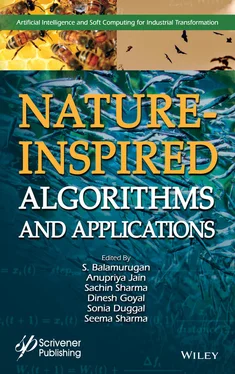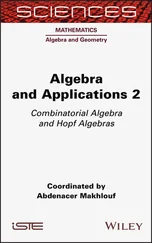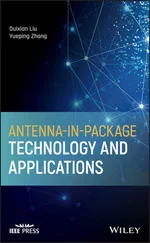–In Chapter 3, “Efficiency of Finding Best Solutions Through Ant Colony Optimization (ACO) Technique,” Dr. K. Sasi Kala Rani and N. Pooranam address the challenges faced in tourism when a planned vacation to a specific destination is challenged by unforeseen events like adverse climate conditions that threaten to derail the trip. In this case, an optimal solution is generated by using heuristic value and an ACO algorithm in which the continuous orthogonal ant colony (COAC) method helps to solve real-world problems.
–In Chapter 4, “A Hybrid Bat-Genetic Algorithm-Based Novel Optimal Wavelet Filter for Compression of Image Data,” Renjith V. Ravi and Kamalraj Subramaniam explain how three modules, namely optimized transformation module, compression and encryption module and receiver module, are used. Initially, the input image is sub-band coded using hybrid bat-genetic algorithm-based optimized DWT. Subsequently, the encoding using SPIHT and chaos-based encryption is carried out. In receiver module, the received signal from the AWGN channel is demodulated, decrypted and de-compressed to obtain the estimated image. From the results, we can infer that the use of the proposed filter and technique has produced better image quality when compared to existing techniques.
–In Chapter 5, “A Swarm Robot for Harvesting a Paddy Field,” N. Pooranam and T. Vignesh discuss how the harvesting process can be improved in a positive way by using the PSO-based swarm intelligent algorithm to help in searching for and optimizing the process. The harvesting process has several steps: Reaping (cutting), threshing (separating process), and cleaning (removing non-grain material from grains). The PSO algorithm will find the positions of all robots to start harvesting and crust-based PSO will help to improve the optimization.
–In Chapter 6, “Firefly Algorithms,” Anupriya Jain, Seema Sharma and Sachin Sharma present the working principle of firefly algorithms (FA) in detail with the algorithm explained and its implementation ready for reference. In recent years, variants of FA to accommodate new problems have been introduced. The hybrid or modified models have tremendously improved the performance of a standard FA. These special cases and applications of this metaheuristic problem are discussed in detail.
–In Chapter 7, “The Comprehensive Review for Biobased FPA Algorithm,” Meenakshi Rana introduces the concept of flower pollination algorithms characterized by a small number of parameters, which make it promising in solving optimization problems, even multi-objective complex ones. These algorithms are embedded with a mechanism for a local and global exploration feature which is complementary and helps the algorithm work efficiently.
–In Chapter 8, “Nature-Inspired Computation in Data Mining,” Aditi Sharma highlights the application of nature-inspired computation in data mining along with its benefits and challenges. For the benefit of the reader, the most used optimization techniques are covered in detail.
–In Chapter 9, “Optimization Techniques for Removing Noise in Digital Medical Images,” Dr. D. Devasena, Dr. M. Jagadeeswari, Dr. B. Sharmila and Dr. K. Srinivasan introduce various types of evolutionary computation algorithms inspired by biological, social and natural systems. These methods include the following algorithms: particle swarm optimization (PSO), bat algorithm (BA), firefly algorithm (FA), social spider optimization (SSO), collective animal behavior (CAB), differential evolution (DE), genetic algorithm (GA) and bacterial foraging algorithm (BFA). Thus, the evolutionary algorithms are ones that simulate biological, natural or social level systems to address real-time image processing problems.
–In Chapter 10, “Performance Analysis of Nature-Inspired Algorithms in Breast Cancer Diagnosis,” K. Hariprasath, Dr. S. Tamilselvi, Dr. N. M. Saravana Kumar, N. Kaviyavarshini and Dr. S. Balamurugan introduce many successful optimization approaches like swarm intelligence, machine intelligence, data mining and resource management. The swarm intelligence model is one of the popular computation theories that is motivated by common swarm frameworks. The three primary swarm protocols are to move in the same direction as its neighbors, to remain as close as possible to the neighbors, and to avoid collision among neighbors.
–In Chapter 11, “Applications of Cuckoo Search Algorithm for Optimization Problems,” Akanksha Deep and Prasant Kumar Dash introduce various optimization algorithms which are classified on the basis of two key elements—diversification and aggregation—generally known as exploitation and exploration. Exploration aims to find a contemporary solution which results in locating global optima, whereas exploitation aims to find local optima of the solution space explored.
–In Chapter 12, “Mapping of Real-World Problems to Nature-Inspired Algorithm Using Goal-Based Classification and TRIZ,” Palak Sukharamwala and Manojkumar Parmar present a novel method based on TRIZ to map real-world problems to nature problems. TRIZ is also known as the theory of inventive problem solving. Using the proposed framework, the best NIA can be identified to solve real-world problems. For this framework to work, a novel classification of the NIA based on the end goal that nature is trying to achieve is devised.
To conclude, we would like to extend our appreciation to our many colleagues. We also extend our sincere thanks to all the experts for providing preparatory comments on the book that will surely motivate the reader to read the topic. We also wish to thank the reviewers who took time to review this book, and are also very grateful to our family members for their patience, encouragement and understanding. Special thanks also go to many individuals at Scrivener Publishing, whose talents and efforts made the publication of this book possible. Finally, any suggestions or feedback from readers to improve the text will be highly appreciated.
The EditorsSeptember 2021
1
Introduction to Nature-Inspired Computing
N.M. Saravana Kumar1*, K. Hariprasath2, N. Kaviyavarshini2 and A. Kavinya2
1Department of Artificial Intelligence and Data Science, M Kumarasamy College of Engineering, Karur, India
2Department of Information Technology, Vivekanandha College of Engineering for Women, Namakkal, India
Abstract
Nature-inspired algorithms have significance in solving many problems. This chapter provides an overview of nature-inspired algorithms like bio-inspired algorithm, swarm intelligence algorithm, and physical and chemical system–based algorithm. Many real-world problems are solved using nature-inspired algorithms and the role of optimization plays an important role. This chapter covers the basic working and classification of nature-inspired algorithms along with its area of applications. The purpose and its significance of each and every algorithm have been described. Also, the applications of algorithms comprise most of the real-time problems.
Keywords:Nature-inspired, bio-inspired, evolutionary computing, swarm intelligence, optimization, applications
An algorithm is a finite series of definite procedure for finding significance of the pattern. They are utilized to explain a course of difficulties and then implement calculation. Algorithm are said to unambiguous and utilized for performing computation and dealing with other task.
Algorithm has different characteristics; they are unambiguous, well-defined input and output, determinate, realistic, and independent of language. Unambiguous refers to having only one interpretation which leads to only one conclusion. Well-defined input and output refers to defining the input and output clearly. Determinate refers to algorithm that must be finite as the algorithm should not conclude with infinite loop. Realistic refers to the algorithm that is general, simple, and practical which may be implemented with an accessible source. Independent of language refers to the algorithm that must be designed with independent of language that it can be implemented in any language.
Читать дальше












